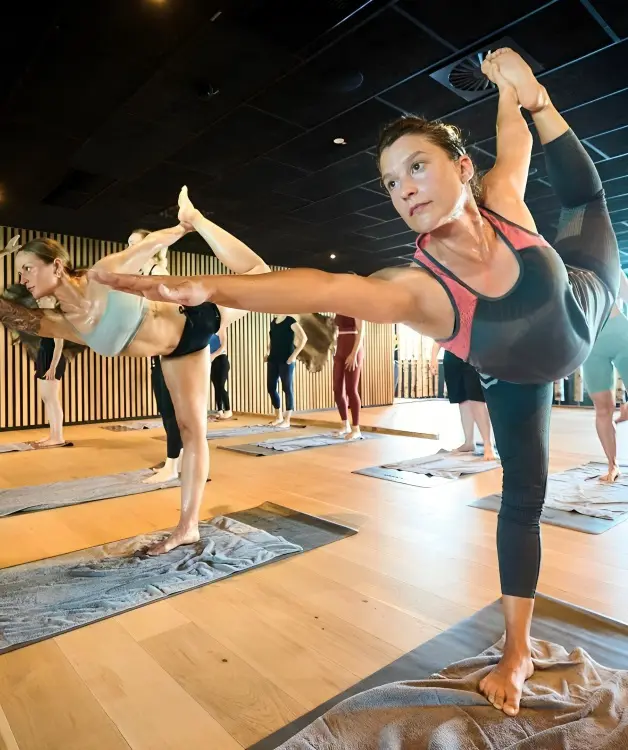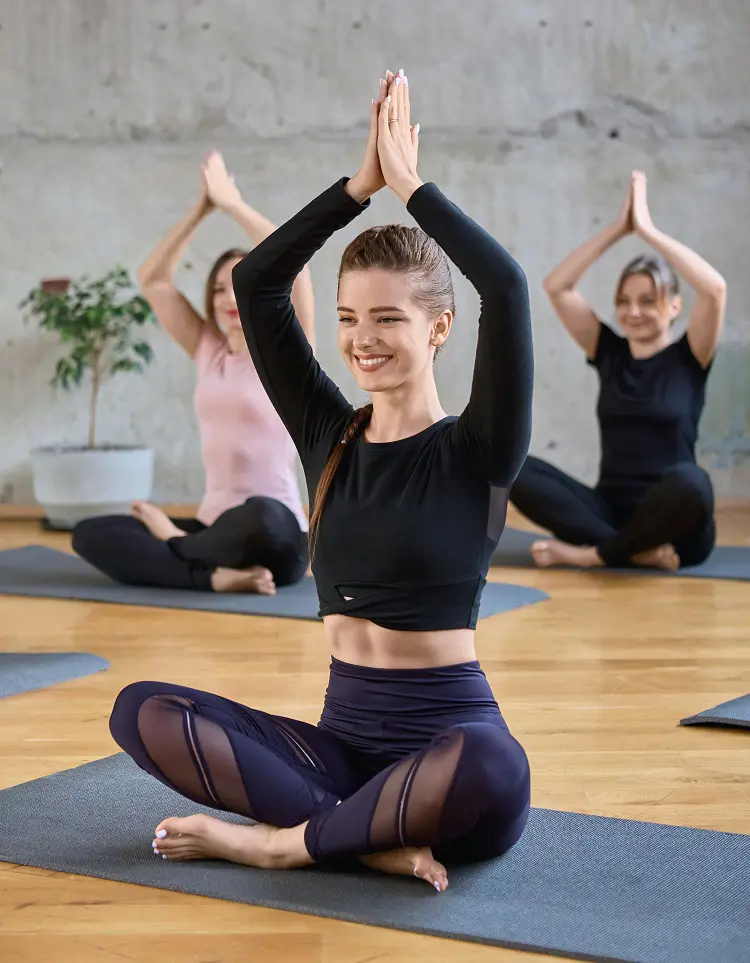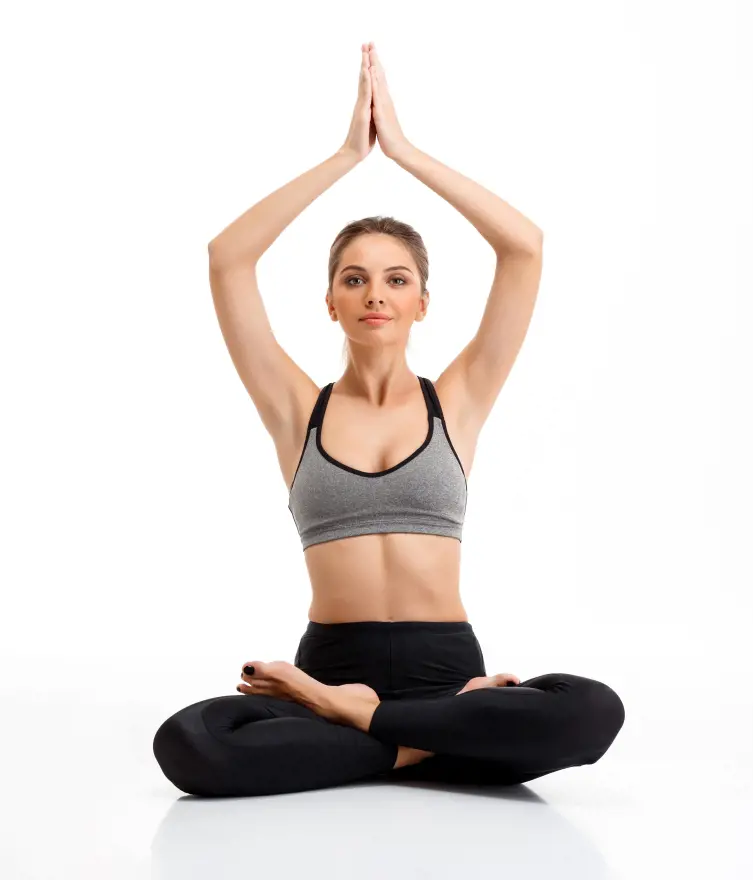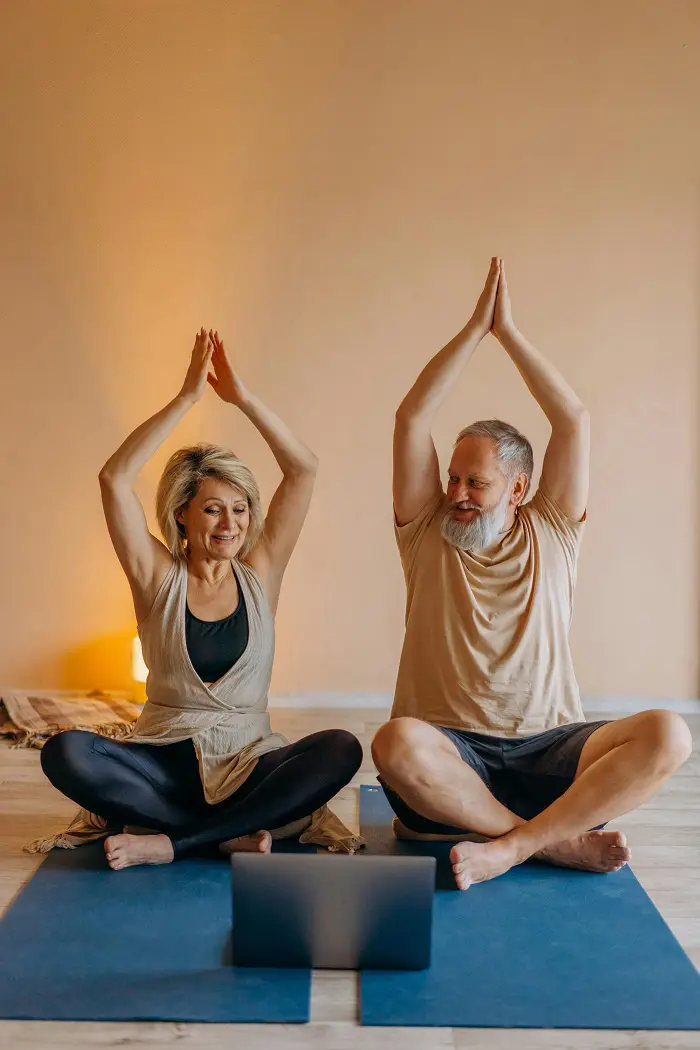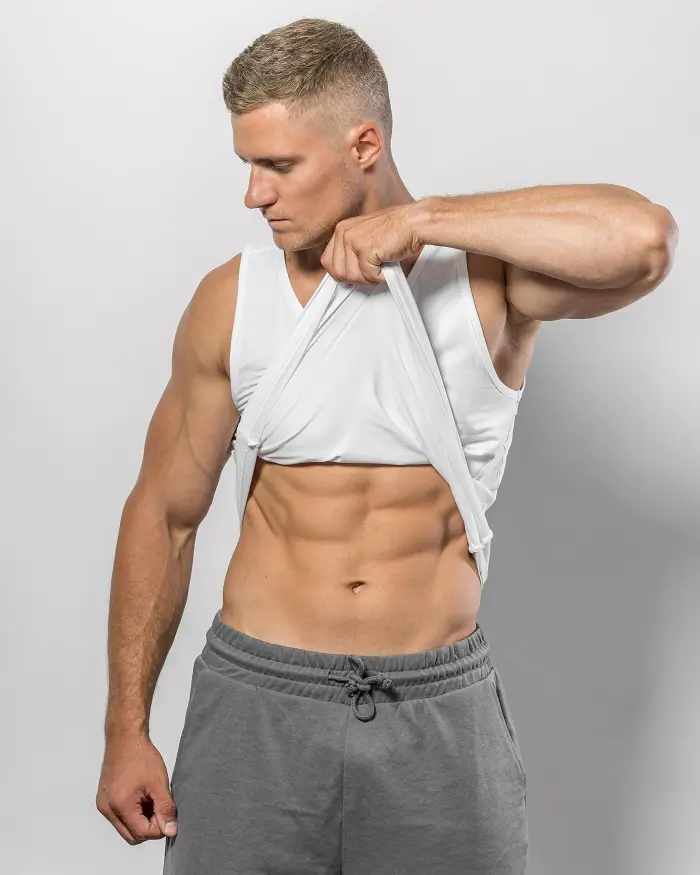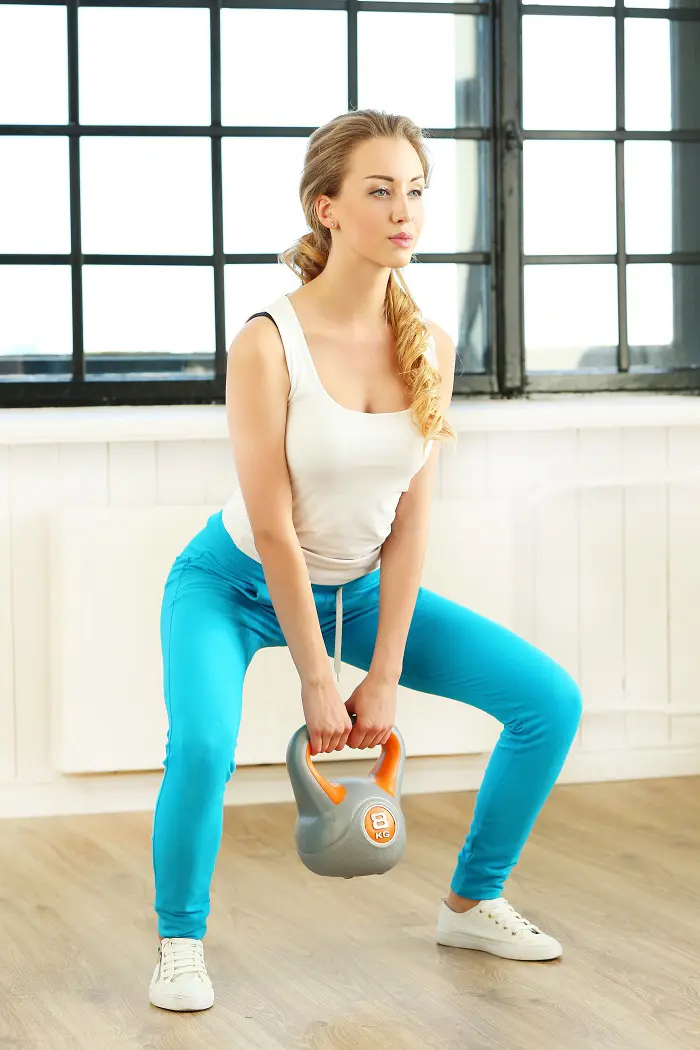14 Awesome Yoga For Lower Back Pain
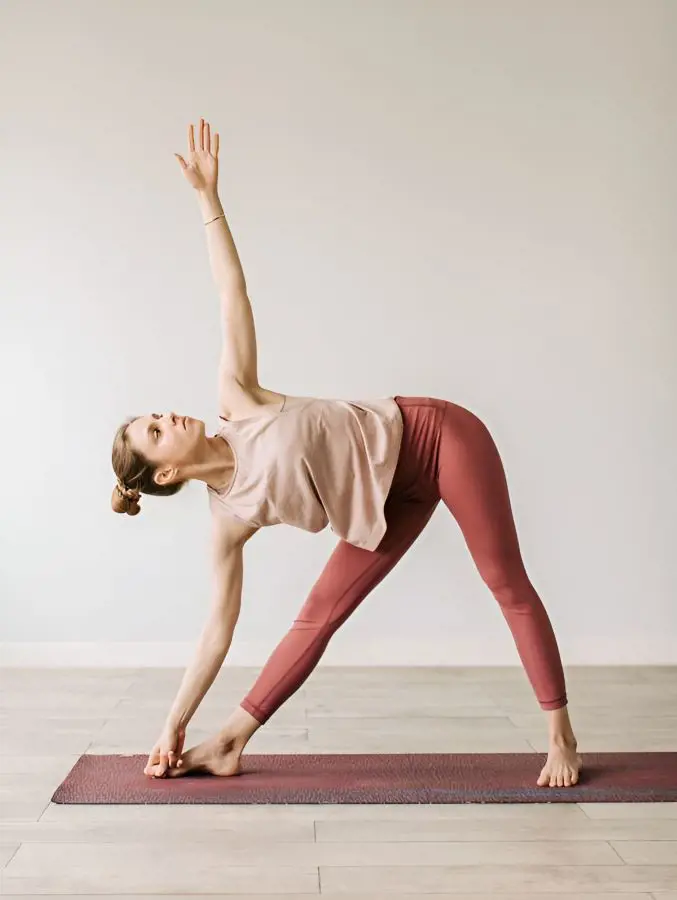
Lower back pain is a common complaint, impacting millions of people worldwide. It can result from various factors, including poor posture, muscle imbalances, and injuries. Fortunately, yoga offers a gentle and effective approach to alleviating pain and improving flexibility.
Frequently practicing yoga is a healthy fitness routine that will transform any workout experience. By stretching and strengthening the muscles around the spine, yoga can help relieve pain and improve flexibility. Here, we'll explore 14 magnificent yoga poses specifically designed to target and ease your lower back pain:
1. Cat-Cow Pose
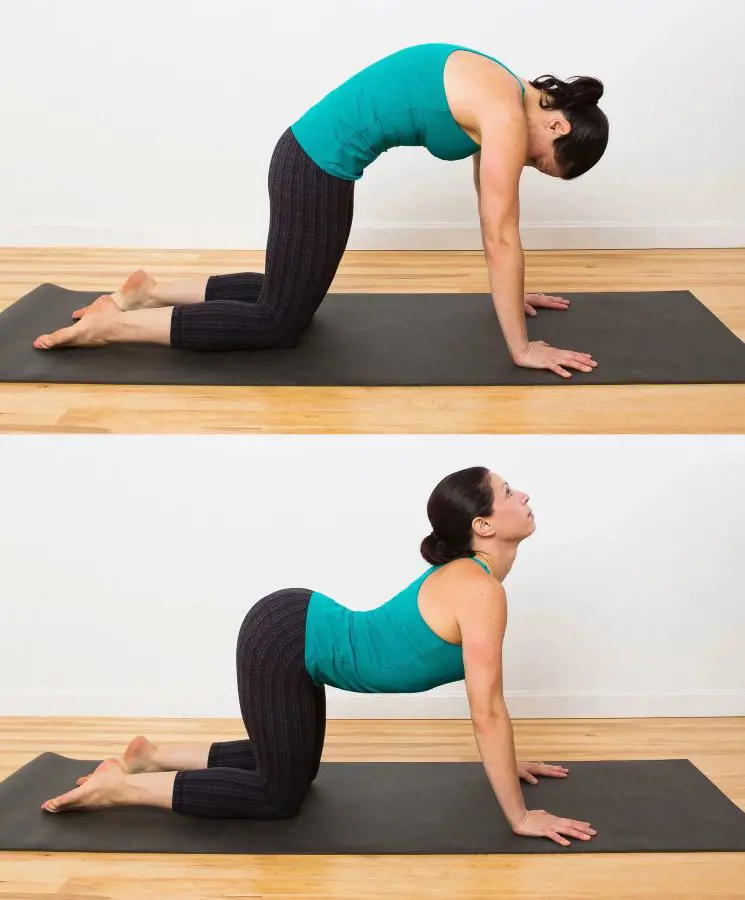
This gentle cat-cow pose (Marjaryasana Bitilasana) helps to warm up the spine and improve mobility. Marjaryasana translates to "cat pose," referencing the rounded spine and tucked chin that resemble a cat on the prowl. Bitilasana translates to "cow pose," reflecting the arched spine and raised head that imitate a cow stretching its back.
Begin on hands and knees, with the hands shoulder-width apart and the knees hip-width apart. Inhale as you arch your back and look up. Exhale as you round your spine and tuck your chin to your chest (cat pose). Repeat the process for 5-10 times.
Some Variations: Cat-Cow with head rotation, Cat-Cow with tailbone tuck, and Cat-Cow with arms overhead.
2. Child's Pose
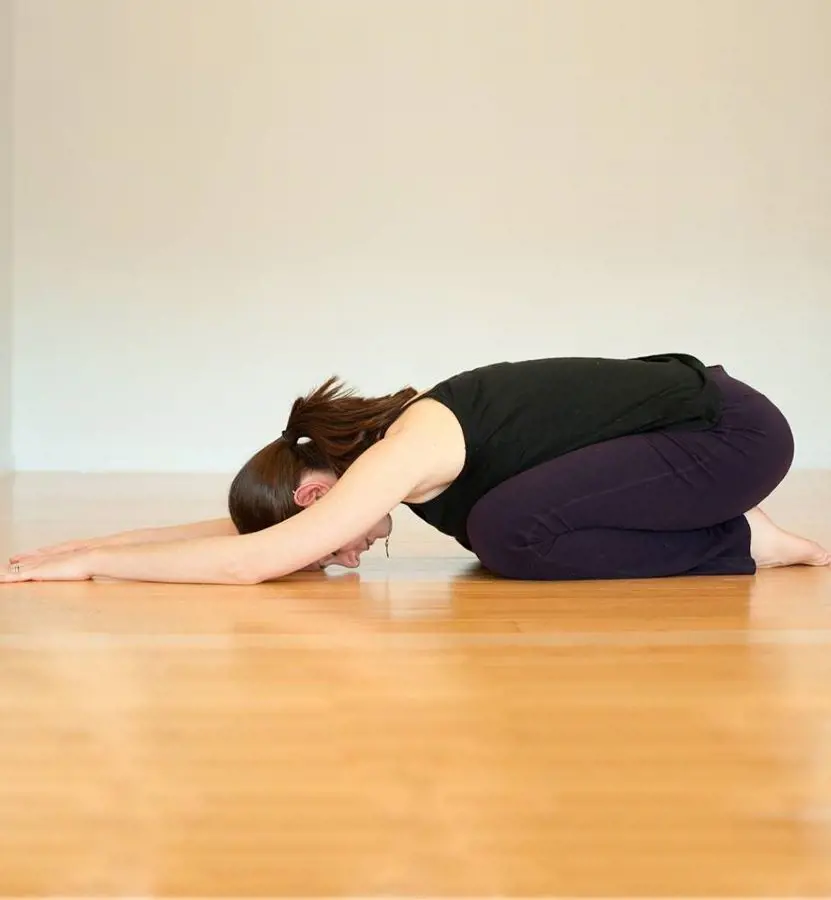
Child's Pose, also known as Balasana, is more than just a resting pose. It offers a multitude of therapeutic benefits for your body and mind, making it an essential part of any yoga practice, such as decompressing the spine, relieving tension in the lower back, and calming the mind.
This restful pose helps to decompress the spine and relieve tension. Start on the hands and knees, then sit back on the heels. Rest the forehead on the mat and extend the arms out in front of you. Hold for 5–10 breaths.
Some variations: arms extended, arms back, propped child's pose.
3. Downward-Facing Dog
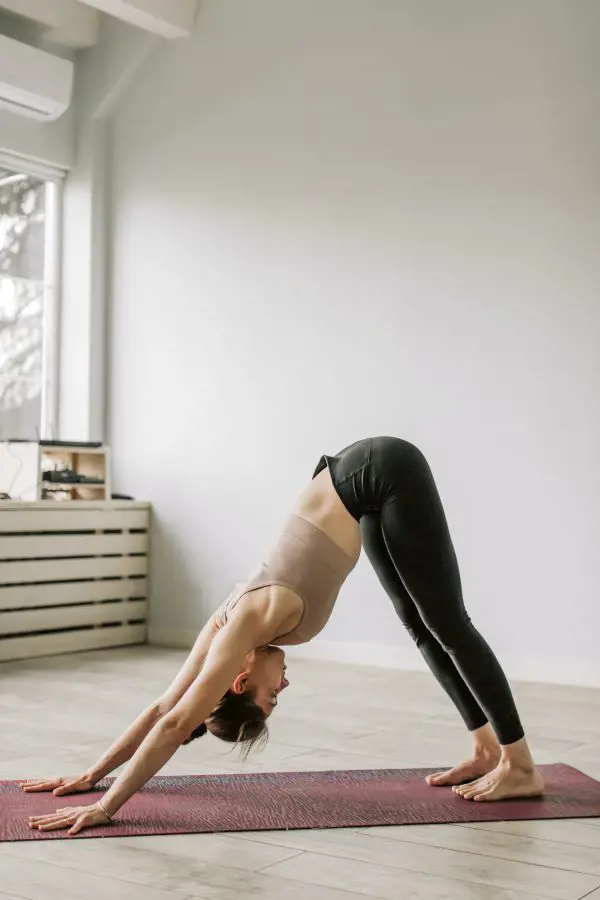
Downward-Facing Dog (Adho Mukha Svanasana) is a cornerstone of any yoga practice. This powerful pose strengthens the entire back body, improves circulation, stretches the hamstrings, and grounds the mind. While the basic pose offers numerous benefits, variations cater to different needs and experience levels, making Downward-Facing Dog accessible and adaptable for everyone.
This classic pose strengthens the entire body, including the lower back. Begin on the hands and knees, then lift the hips up and back into an inverted V-shape. Keep the heels grounded and the back long. Hold for 5–10 breaths.
Some variations: dolphin pose, one-legged dog, three-legged dog.
4. Warrior I
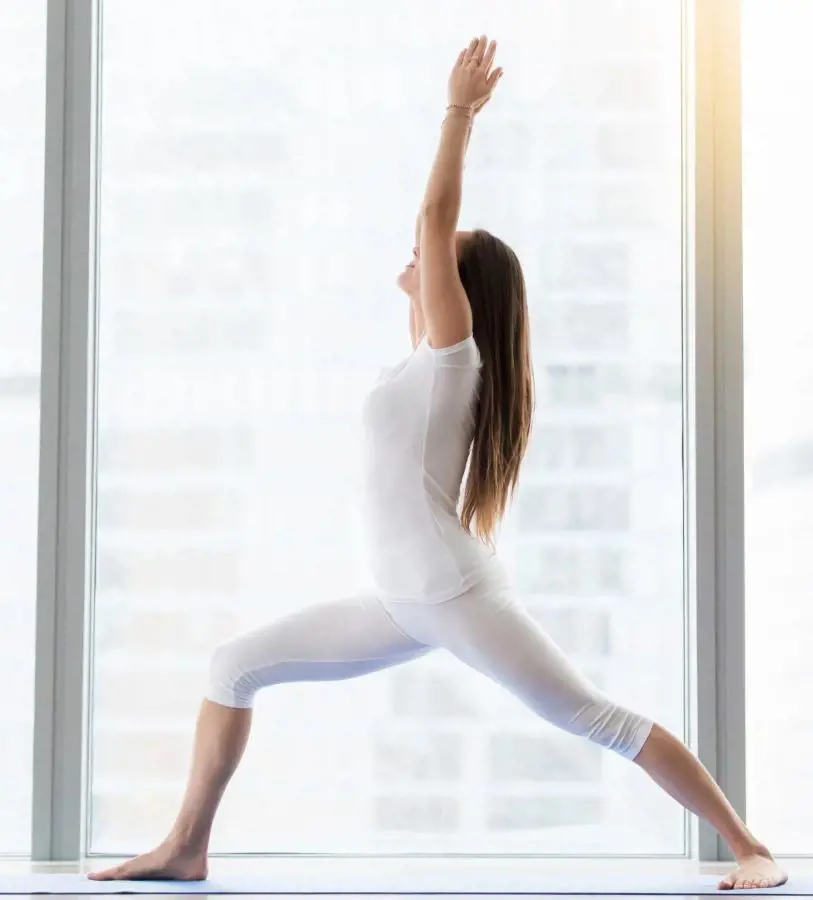
Warrior I (Virabhadrasana I) is a foundational pose in yoga, known for its powerful combination of strength and flexibility. This pose stands tall and proud, embodying the courage and determination of a warrior, and offers numerous benefits for your physical and mental well-being.
This yoga helps to strengthen the legs, hips, and core, boost energy levels, and stretch the chest, shoulders, and hamstrings. Start standing with your feet hip-width apart. Step one foot back and bend your front knee to a 90-degree angle. Keep your arms extended overhead. Hold for 5 breaths on each side.
Some variations: humble warrior, reverse warrior, warrior flow.
5. Triangle Pose
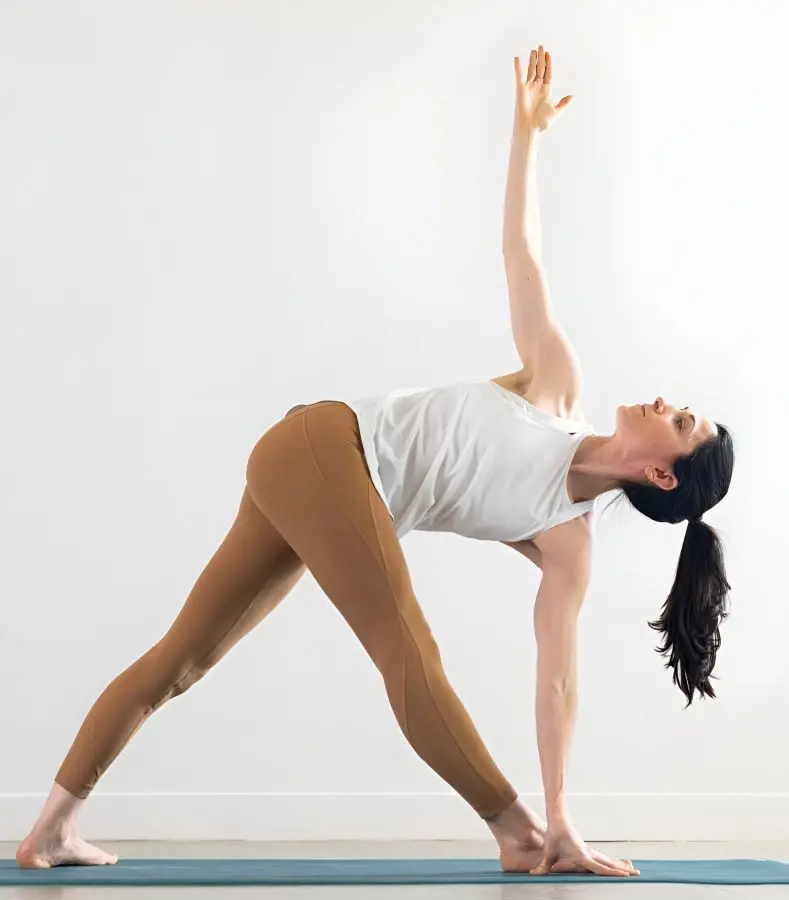
Triangle Pose, also known as Trikonasana in Sanskrit, is a foundational yoga pose that offers numerous benefits for the body and mind. It stretches the sides of the body, improves flexibility, strengthens the legs and core, and even aids in digestion.
To begin, start standing with your feet wide apart. Turn your right foot out and your left foot in. Reach your right arm up and your left arm down. Hold for 5 breaths on each side.
Some variations: revolving triangle pose, extended triangle pose, and bound triangle pose.
6. Bridge Pose
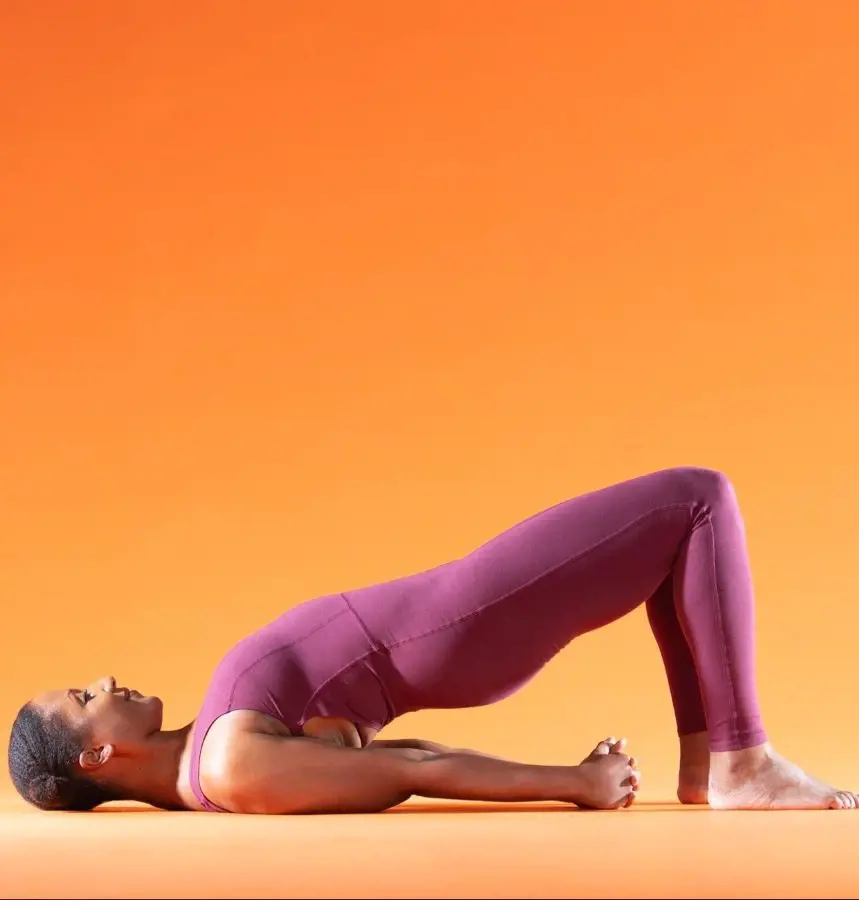
Bridge Pose, also known as Setu Bandhasana in Sanskrit, aids in many ways. This yoga engages major muscle groups in the core, glutes, hamstrings, and lower back. This helps to strengthen and stretch these areas, leading to improved posture, greater flexibility, and even lower back pain relief.
To perform this yoga, start by lying on the back with the knees bent and the feet flat on the floor. Lift the hips off the ground until the body forms a straight line from the shoulders to the knees. Hold for 5–10 breaths.
Some variations: Supported bridge, one-legged bridge, Bridge Pose Variation Arms Flow I
7. Plank Pose
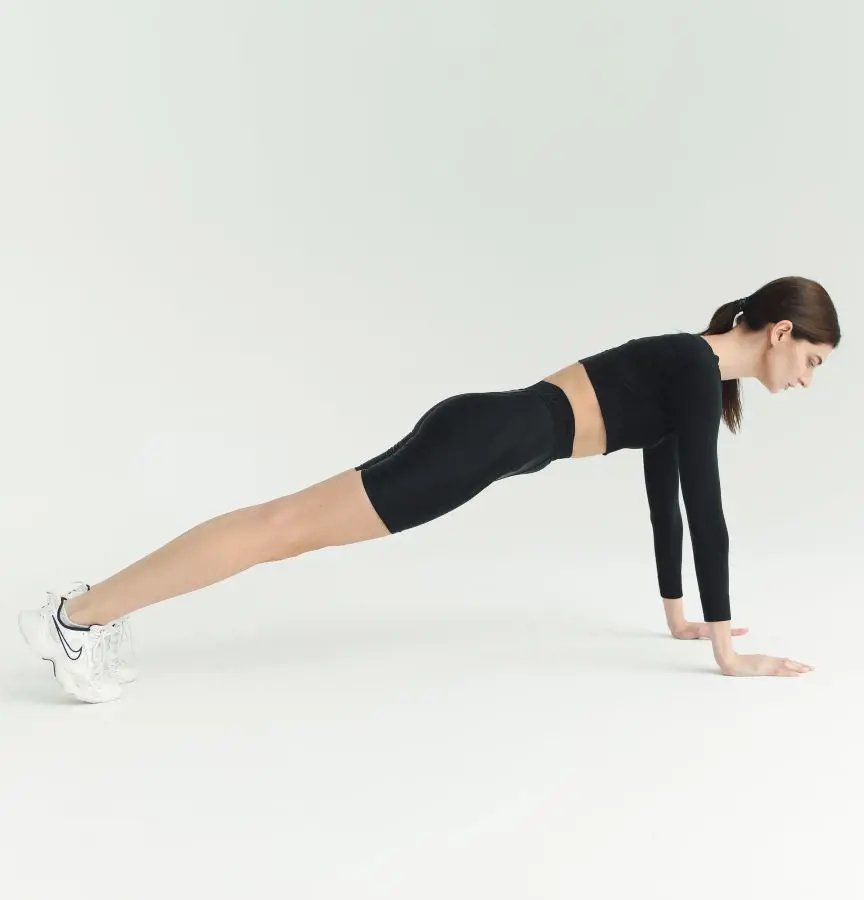
The plank pose, also known as Chaturanga Dandasana, is a fundamental pose in yoga that engages multiple muscle groups, primarily targeting your core. It strengthens your abdominal muscles, back muscles, shoulders, and arms, leading to improved posture, balance, and overall stability.
To indulge in this yoga, begin in a push-up position with your forearms on the ground. Keep your body in a straight line from your head to your heels. Hold for 30–60 seconds. The basic plank pose can be modified to accommodate different fitness levels and challenges.
Some variations: forearm plank, side plank, plank with knee taps.
8. Cobra Pose
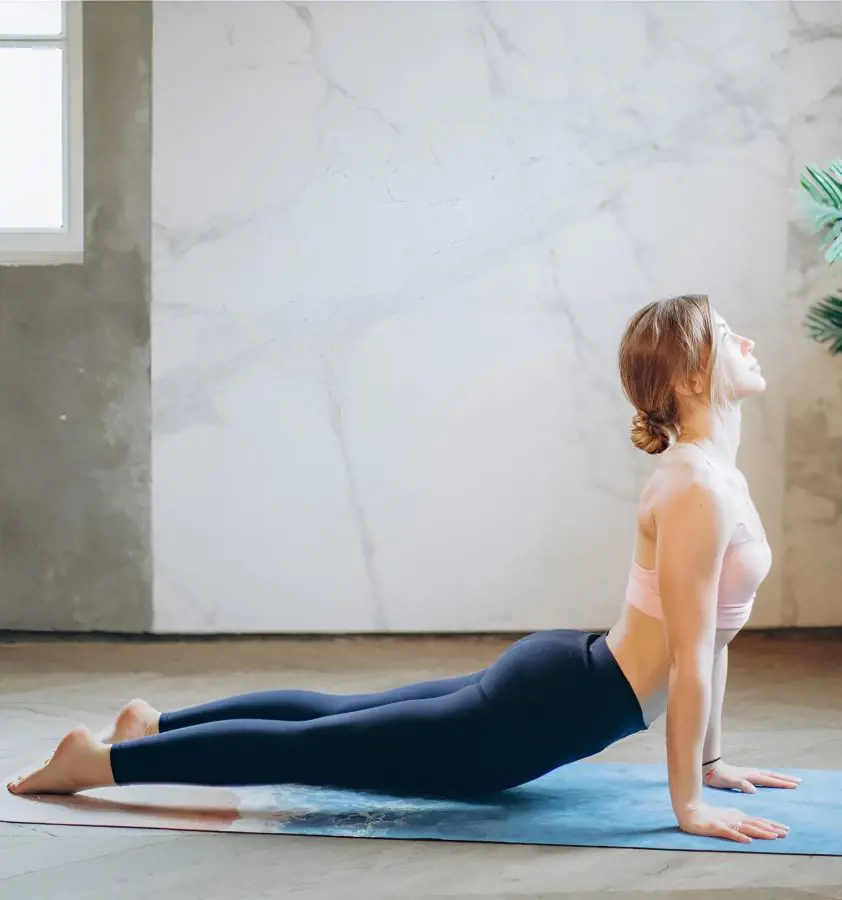
Cobra Pose (Bhujangasana) is a fundamental backbend pose in yoga that strengthens the spine, stretches the chest and abdomen, and improves flexibility. Perform this yoga by lying on the stomach with the hands flat on the floor under the shoulders. Lift the upper body off the ground, keeping the hips on the ground, and hold for 5–10 breaths.
While it offers numerous benefits, the pose can be intense for beginners or individuals with lower back pain. Thankfully, numerous variations exist to make Cobra Pose accessible and enjoyable for everyone.
Some variations: cobra pose with hands-on back, half cobra, seal pose.
9. Locust Pose
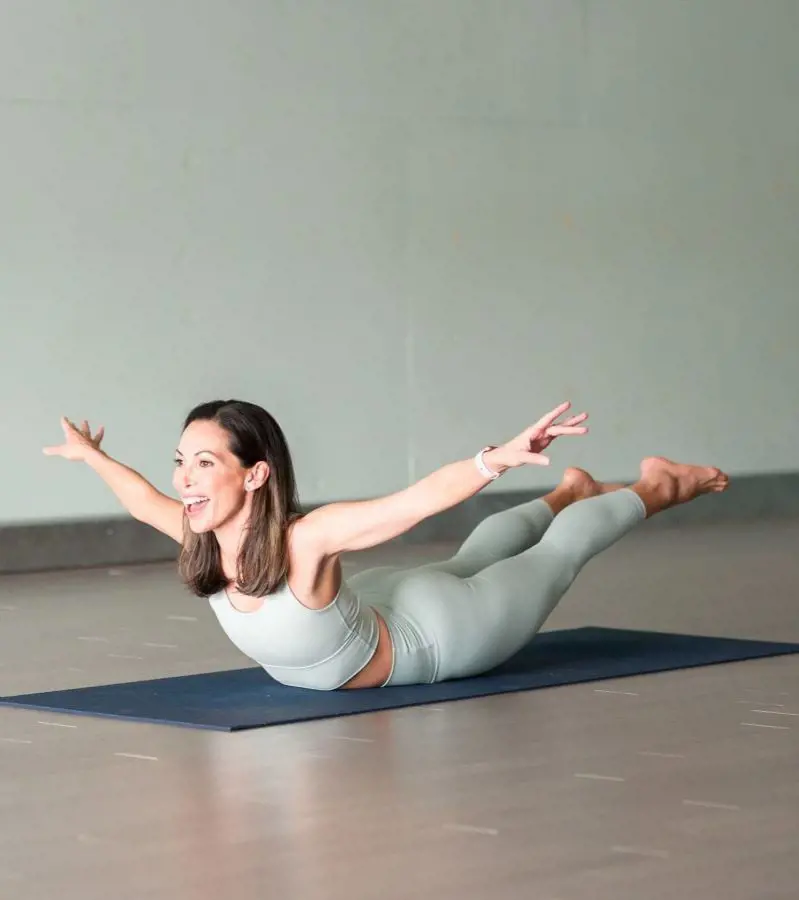
The locust pose, also known as Salabhasana, is a yoga pose that is highly beneficial for the lower back. This pose strengthens the back muscles, improves flexibility, and relieves tension, leading to better posture and reduced pain.
Start lying on your stomach with your arms outstretched overhead. Lift your chest, head, and legs off the ground and hold for 5–10 breaths. By practicing the locust pose and its variations regularly, one can enjoy a stronger, more flexible lower back and experience a significant reduction in pain.
Some variations: locust pose with arms overhead, with legs up, with yoga block.
10. Bow Pose
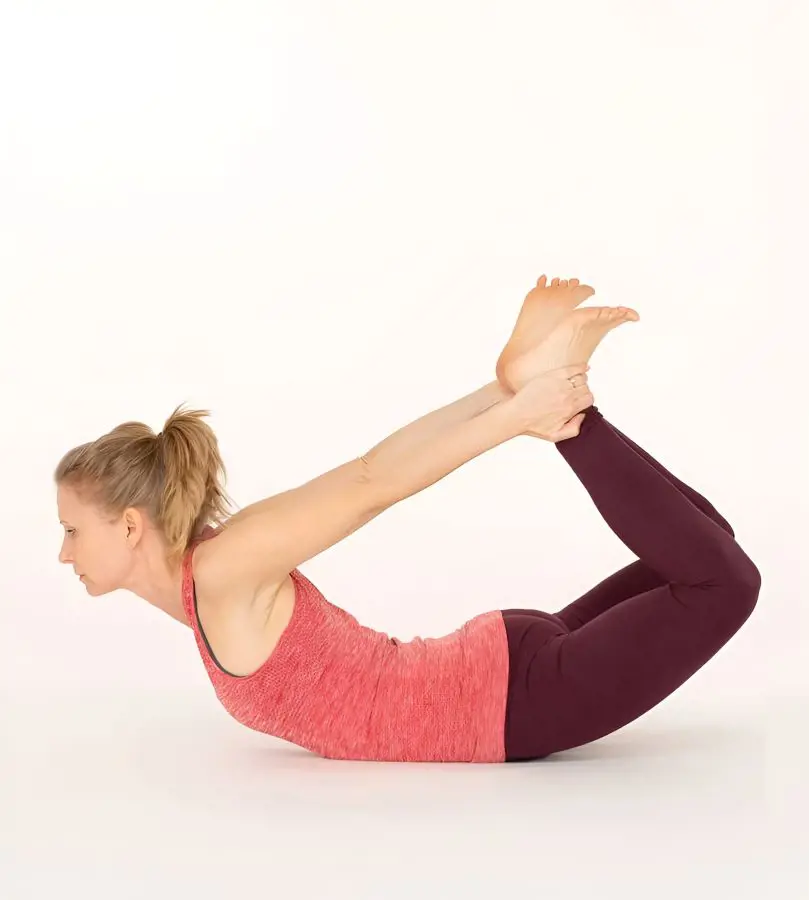
Bow Pose, also known as Dhanurasana, is a powerful backbend pose that stretches and strengthens the entire body. It is a challenging pose that requires strength, flexibility, and coordination. However, the benefits of mastering this pose are numerous, including improved spine flexibility, strengthened back muscles, and reduced stress and anxiety.
This yoga can be done by lying on the stomach with the knees bent and the feet flat on the floor. Try reaching back and grasping the ankles with your hands. Lift the chest and thighs off the ground and hold for 5–10 breaths.
Some variations: easy bow pose, one-legged bow pose, and supported bow pose.
11. Fish Pose
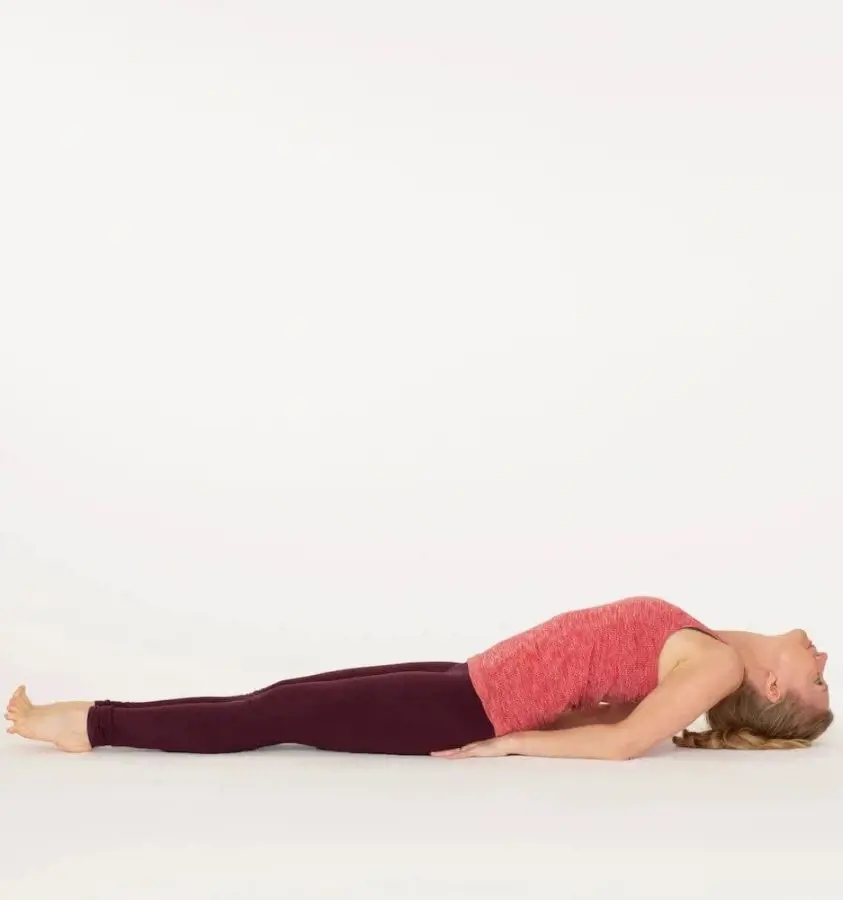
Fish Pose, also known as Matsyasana, is a restorative backbend that offers a deep sense of relaxation and opening in the chest, shoulders, and neck. It's a beautiful pose that allows you to surrender to gravity and experience a gentle expansion of the heart center.
This pose stretches the chest muscles and improves shoulder mobility, counteracting the effects of hunching and slouching. It also stretches the spine and neck, increasing overall flexibility and range of motion. You can perform this pose by lying on your back with your legs and arms extended.
Some variations: fish pose with bolsters, fish pose with blocks, and fish pose with straps.
12. Half Lord of the Fishes
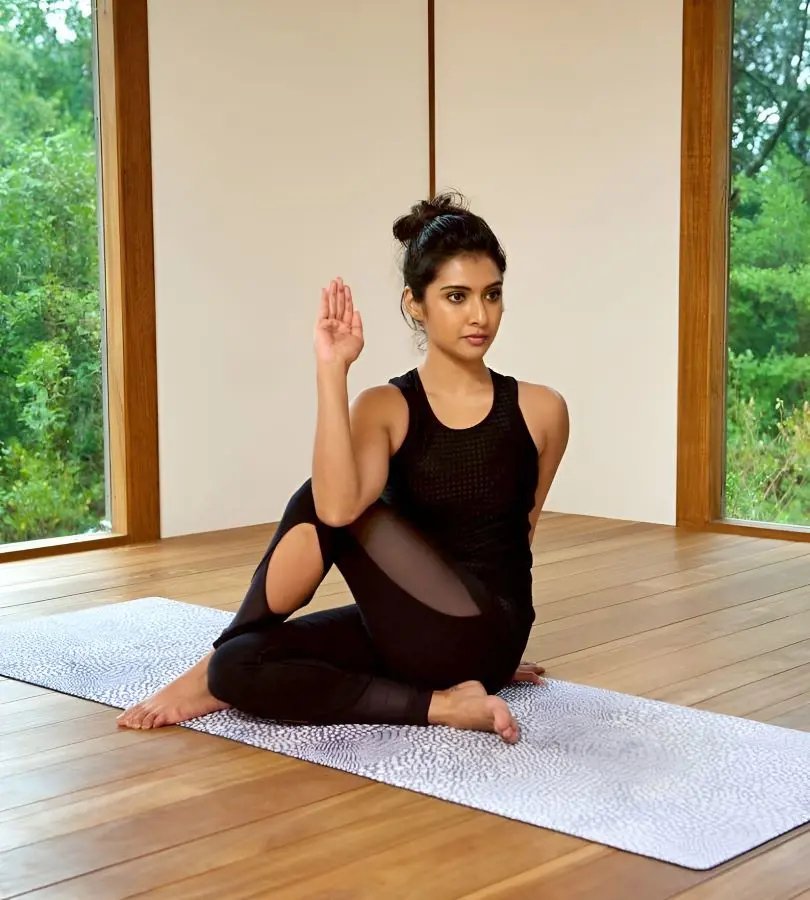
The Half Lord of the Fishes Pose, also known as Ardha Matsyendrasana in Sanskrit, is a seated twisting pose that helps to stretch the spine, opens the hips and chest, and improves digestion and circulation. The calming and meditative nature of the pose can help reduce stress and anxiety levels.
To perform this yoga, start by sitting on the floor with the legs extended in front. Bend the right knee and place the right foot flat on the floor outside of your left knee. Inhale and exhale according to the rotation of the hand and torso.
Some variations: supported half lord of the fishes, supine half lord of the fishes, and bound half lord of the fishes.
13. Two-Knee Spinal Twist
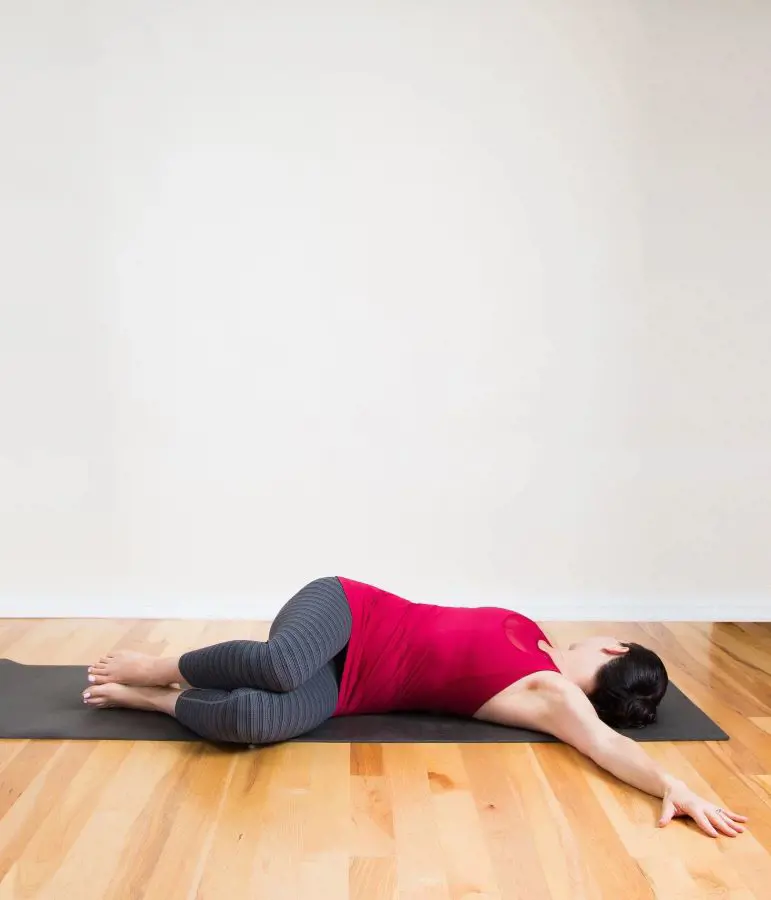
The Two-Knee Spinal Twist, also known as Supta Matsyendrasana in Sanskrit, is a gentle and accessible yoga pose that effectively targets the lower back and hips, offering relief from pain and stiffness. It's a great option for beginners and those with limited mobility. The twist involved in this yoga stimulates the internal organs, promoting improved digestion and elimination.
While doing this pose, try to keep the shoulders relaxed and away from the ears. Breathe deeply and evenly throughout the pose. Focus on feeling the stretch in your spine and the release of tension.
Some variations: supported two-knee spiral twist, right-hand bend spiral twist.
14. Pigeon Pose
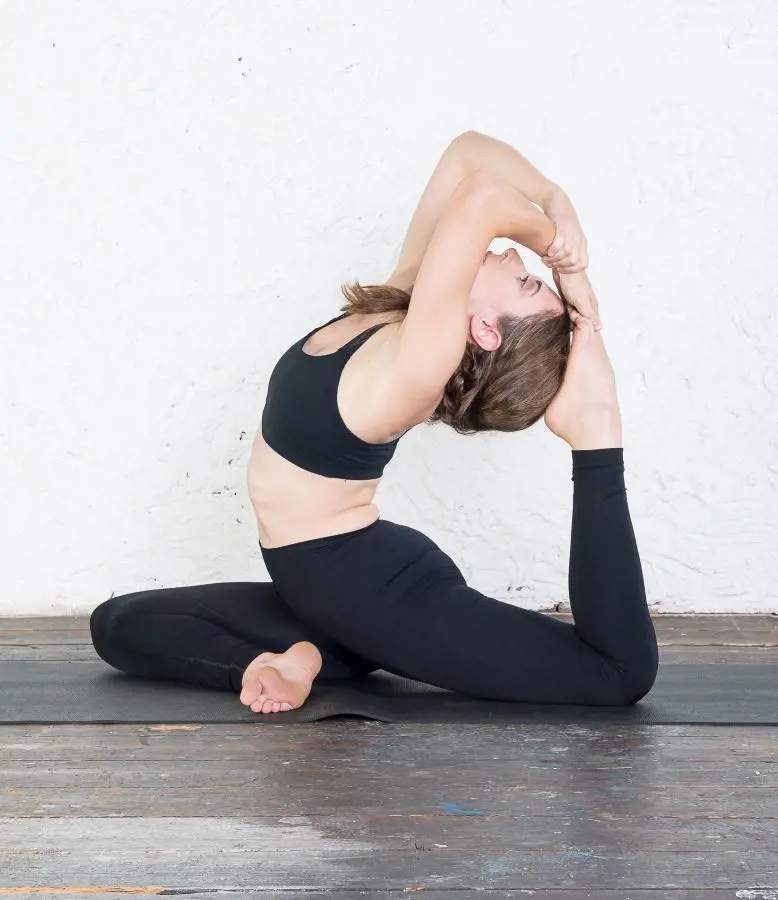
Pigeon Pose (Eka Pada Rajakapotasana) is a powerful hip opener that stretches the outer hip, hip flexors, and groin of the forward leg while also strengthening the back leg and core. It's a deeply restorative pose that can help to release tension, improve flexibility, and reduce lower back pain.
To perform this pose, start in a downward-facing dog pose. Then step the knee forward between the hands and lower the left shin down towards the mat, keeping the left foot flexed. Stay in the pose for at least 5–10 breaths, then switch sides.
Some variations: supported pigeon pose, wide-legged pigeon pose, and one-legged king pigeon pose.
Recent posts
Yoga
Yoga
13 Breathing Techniques To Bring Calm And Relieve Anxiety
Practicing breathing techniques can be extremely helpful in soothing anxiety and bringing a sense of calm. They are easy to perform and provide a faster way to induce relaxation. However, with so many techniques out there, choosing the best ones can ...
Yoga
15 Health Benefits of Hot Yoga to Heat Up Your Fitness
Do you feel like you're stuck in a monotonous yoga routine? Ever wish for a yoga session that challenges your body to drip sweat? Imagine walking into a room filled with heat, where every move tests your strength, flexibility, and determination. If y...
Yoga
15 Yoga For Beginners To Mindful Well Being
Yoga isn't just about doing cool poses that you see on TV or in advertisements. It's way more! Besides the physical exercises (called asanas), yoga includes self-disciplinary practices, such as meditation, chanting, mantra, breath work, prayer, ritua...
Yoga
15 Yoga Stretches You Can Do Everyday
People have been practicing yoga since ancient times, combining physical postures, breathing exercises, and meditation. These routines offer many benefits for both your physical and mental health. They include improved flexibility, strength, and bala...
Yoga
14 Types Of Yoga And Their Health Benefits
Yoga is an ancient practice that combines physical postures, breathing techniques, and meditation to improve overall health. It is performed on a mat and can be done at any time, with many people choosing mornings for a fresh start. The practice offe...
Yoga
17 Best Yoga Poses For A Couple
Yoga poses for two people can help you discover the power of shared connection through the ancient art of yoga. Whether you're looking to strengthen your relationship, build trust, or simply add an exciting twist to your practice, practicing yoga wit...

